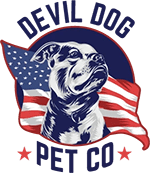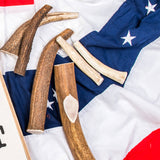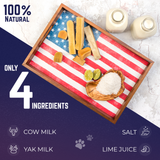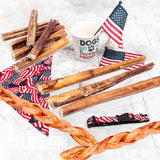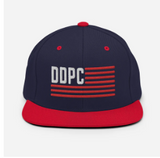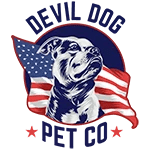Why Your Dog's Nails Matter More Than You Think
Here's the unfiltered truth: dog nails aren't just cosmetic—they're mission-critical for your pup's health, comfort, and quality of life. Every week, we see owners who've let nail care slide until their dog's walking like they're tiptoeing through a minefield.
Key Takeaways
- Dog nails are made of keratin and grow continuously, requiring regular trimming every 3-4 weeks.
- Proper nail care is essential to prevent pain, injury, and mobility problems in dogs.
- Understanding nail anatomy and using the right tools are crucial for effective nail maintenance.
- Consistent trimming schedules help maintain your dog's comfort and overall health.
- Neglecting nail care can cause dogs to walk uncomfortably, impacting their quality of life.
Table of Contents
- Why Your Dog's Nails Matter More Than You Think
- Dog Nail Anatomy: Know What You're Working With
- Why Dog Nails Exist (And Why Length Matters)
- Spotting Problems Before They Become Emergencies
- Dog Nail Care Toolkit: Gear Up for Success
- Step-by-Step Dog Nail Trimming Guide
- Advanced Strategies for Challenging Dogs
- Troubleshooting Common Nail Problems
- Special Considerations: Puppies and Senior Dogs
- Building a Positive Long-Term Nail Care Routine
- Conclusion: Mastering Dog Nail Care for Life
Key Fact: Overgrown nails affect 60% of dogs and can cause permanent joint damage, altered gait, and chronic pain within months of neglect.
As a Marine Corps veteran and co-founder of Devil Dog Pet Co., I've learned that leadership starts with the fundamentals. In the Corps, we maintained our gear because lives depended on it. Your dog's nails deserve the same attention—because their comfort and mobility depend on it.
This isn't about perfect pedicures. It's about preventing your dog from suffering in silence while you wonder why they're limping, reluctant to walk, or showing signs of joint stress. When we rescued our dog Dexter, his nails were so overgrown they'd started curling into his paw pads. That's a leadership failure I'll never repeat.
Bottom line: Proper dog nail care prevents pain, protects joints, maintains traction, and keeps your pup moving confidently through life. Master this skill, and you'll save hundreds in vet bills while keeping your dog comfortable.
Dog Nail Anatomy: Know What You're Working With

Before you pick up those clippers, you need to understand exactly what you're dealing with. Dog claws aren't just thick human nails—they're complex structures that require respect and precision.
The Structure of a Dog's Nail
Every dog nail consists of two main components that determine how you approach trimming:
The Outer Shell (Claw)
The hard, keratinous outer layer is what you'll actually cut. This shell contains no nerves or blood vessels, making it completely painless to trim when done correctly. Think of it as nature's protective coating—it provides traction for running, grip for climbing, and protection during digging.
Key Point: The outer shell grows continuously, just like human fingernails. Without regular trimming, it will curl and potentially grow into the paw pad.
The Quick
Here's where things get serious. The quick is the inner soft tissue packed with nerves and blood vessels. Cut into this, and you'll cause pain and bleeding—a mistake that can make future dog nail trimming sessions a wrestling match.
In light-colored nails, the quick appears as a pink triangle. In dark nails, you'll need to trim gradually and watch for a small black dot in the center—that's your warning sign to stop. For more tips on trimming dark nails, check out our expert guide for safe trimming black dog nails.
Nail Location and Special Features
Most dogs have four main nails per paw, each attached to a paw pad and naturally curved toward the pad. But there's a fifth player that demands extra attention.
Dewclaws: The Wild Card
Dewclaws are positioned higher on the leg, like a thumb. Some are firmly attached to bone and muscle; others are "floppy" and connected only by skin. Both types are prone to injury because they don't make ground contact and rarely wear down naturally.
"Dewclaws are the most commonly neglected nails in my practice. They grow faster, catch on everything, and can tear completely off if ignored." - Dr. Sarah Mitchell, Veterinary Surgeon
Here's the tactical reality: dewclaws require more frequent attention than regular nails. Mark your calendar and check them weekly.
Dog Nail Colors and Identifying the Quick
Nail color determines your trimming strategy. Clear or light nails show the pink quick clearly—easy mode. Dark or black nails hide the quick completely—expert level required.
At a Glance - Quick Identification:
- Light nails: Look for pink triangle inside the nail
- Dark nails: Trim tiny amounts and watch for a small black dot
- Mixed nails: Use the light nails as a length guide for dark ones
Why Dog Nails Exist (And Why Length Matters)
Understanding the purpose behind dog paw nails helps you appreciate why proper maintenance isn't optional—it's essential leadership.
Functional Roles
Your dog's nails serve three critical functions:
- Traction and Grip
- Nails dig into surfaces for secure footing during acceleration, deceleration, and directional changes. Watch a dog sprint—those nails are working overtime.
- Protection
- The nail shell shields sensitive toe tips from rocks, rough terrain, and impact during normal activity.
- Digging and Manipulation
- From burying bones to scratching itches, nails are your dog's primary tools for interacting with their environment.
Why Proper Nail Length Matters
Here's the standard: healthy dog nails should not touch the ground when your dog is standing normally on a hard surface. You might hear them click slightly during movement, but constant clicking means they're too long.
You might be wondering: "What happens if I let my dog's nails grow too long?" The answer is a cascade of problems that start small and get expensive fast.
Overgrown nails cause:
- Curling and Inward Growth: Nails can actually grow into paw pads, creating painful wounds and infections
- Altered Gait: Long nails force dogs to adjust their walking pattern, leading to joint stress and arthritis
- Splayed Feet: Toes spread unnaturally to accommodate long nails, weakening the entire foot structure
- Reduced Traction: Especially dangerous for senior dogs who already struggle with stability
- Tendon Issues: Chronic compensation can strain tendons and ligaments throughout the leg
Pro Tip: Regular trimming actually encourages the quick to recede, making future trims easier and allowing you to maintain shorter, healthier nails.
The bottom line? Proper dog nails care isn't about aesthetics—it's about maintaining your dog's structural integrity and preventing a domino effect of health problems that can cost thousands to correct.
Spotting Problems Before They Become Emergencies
Extreme Dog Leadership means staying ahead of problems, not reacting to crises. Here's how to assess your dog's nail health like a pro.
Characteristics of Healthy Nails
Healthy dog nails have specific characteristics that signal good care and genetics:
- Firm, Even Texture: No soft spots, ridges, or brittleness
- Appropriate Length: Clear of ground contact when standing
- Smooth Growth: No splitting, cracking, or irregular growth patterns
- Natural Color: Consistent coloring without discoloration or dark spots
- Clean Quick: Pink and healthy-looking in light nails
Signs of Nail Problems
Your dog can't tell you their nails hurt, but their behavior will. Watch for these red flags:
Immediate Vet Visit Required:
- Bleeding that won't stop after 10 minutes of direct pressure
- Nails torn completely or partially off
- Signs of infection: swelling, discharge, or foul odor
- Persistent limping or reluctance to walk
Behavioral signs include:
| Behavior | Possible Nail Issue | Action Required |
|---|---|---|
| Persistent paw licking | Ingrown nail or injury | Inspect immediately |
| Limping or favoring one leg | Broken or overgrown nail | Check all nails on affected leg |
| Reluctance to walk on hard surfaces | Overgrown nails causing discomfort | Measure nail length against ground |
| Scratching excessively | Nails too long or sharp | Trim and file rough edges |
The key is catching problems early. Weekly nail inspections during your regular grooming routine can prevent minor issues from becoming major veterinary emergencies. Take ownership of your dog's nail health—it's a fundamental part of responsible leadership.
Dog Nail Care Toolkit: Gear Up for Success

You wouldn't head into battle with subpar equipment, and dog nail trimming deserves the same tactical approach. The right tools make the difference between a smooth operation and a wrestling match that ends with blood, stress, and a dog who hides when they see clippers.
Quick Answer: Essential dog nail care tools include quality clippers (scissor or plier-style), styptic powder for bleeding control, high-value treats, and good lighting. Optional upgrades: nail grinder for precision and non-slip mat for stability.
Nail Trimmers/Clippers: Your Primary Weapon
Not all clippers are created equal. Here's the tactical breakdown:
- Scissor-Style Clippers
- Best for small to medium dogs with softer nails. They work like tiny scissors, giving you precise control and a clean cut. The blade alignment stays consistent, reducing the risk of crushing or splitting the nail.
- Plier-Style Clippers
- The heavy-duty option for large dogs or thick nails. These provide maximum leverage and cutting power. Look for models with safety guards to prevent over-cutting.
- Guillotine Clippers
- A blade slices down as you insert the nail through a hole. While popular, these carry higher risk for quick injury because you can't see exactly where you're cutting. We generally recommend avoiding these unless you're highly experienced.
Pro Selection Tip: Choose clippers sized appropriately for your dog. Oversized clippers on small nails create imprecise cuts; undersized clippers on thick nails require dangerous force.
Nail Grinders: Precision Power Tools
Grinders gradually file down nails using a rotating abrasive surface. They're particularly valuable for:
- Dogs with dark nails where the quick is invisible
- Anxious dogs who fear the "snap" sound of clippers
- Precision work around damaged or irregularly shaped nails
- Smoothing rough edges after clipping
The downside? Grinders require patience and can generate heat if used incorrectly. Always use short bursts and let the nail cool between applications.
Additional Supplies: Mission Support
Your support gear can make or break the operation:
| Item | Purpose | Why It Matters |
|---|---|---|
| Styptic powder | Stop bleeding from quick cuts | Accidents happen—be prepared |
| High-value treats | Positive reinforcement | Creates positive associations with nail care |
| Non-slip mat | Secure footing | Reduces anxiety and improves control |
| Bright LED light | Clear visibility | Essential for identifying the quick |
| Towel | Wrap anxious dogs | Provides security and prevents scratching |
"I keep cornstarch in my toolkit as a backup to styptic powder. It's less effective but works in emergencies and won't sting as much." - Maria Rodriguez, Professional Dog Groomer
For dogs who need extra motivation during nail trims, consider rewarding them with a long lasting dog chew after a successful session. Chews like antler dog chews or bully sticks can help distract and calm your pup, making the process smoother for both of you.
Step-by-Step Dog Nail Trimming Guide
This is where theory meets reality. Follow this protocol, and you'll transform dog nail trimming tips into confident execution.
Before You Begin: Set Conditions for Success
Preparation determines outcome. Here's your pre-flight checklist:
- Acclimate Your Dog: Spend a week handling paws during calm moments. Reward with treats and praise.
- Introduce Tools: Let your dog see and smell the clippers. Click them near (not on) the dog while giving treats.
- Choose Your Battlefield: Well-lit area, non-slip surface, minimal distractions.
- Time It Right: Post-walk when your dog is tired, or during natural calm periods.
At a Glance - Setup Checklist:
- ✓ Clippers sharp and clean
- ✓ Styptic powder within reach
- ✓ High-value treats ready
- ✓ Good lighting positioned
- ✓ Dog calm and receptive
The Trimming Process: Execute with Precision
Now for the main event. Every movement should be deliberate and confident:
Step 1: Secure Position and Isolate Nail
Hold your dog's paw firmly but gently. Use your non-dominant hand to extend the paw and move fur away from the nail. Your grip should be confident—hesitation creates anxiety.
Critical Point: Never squeeze the paw or nail. Apply steady, gentle pressure to extend the nail naturally.
Step 2: Identify the Quick
This is where your preparation pays off:
- Light nails: Look for the pink triangle inside the nail—stay well clear of it
- Dark nails: Start with tiny cuts and watch for a small black dot in the center
- When in doubt: Cut less rather than more—you can always trim again
Step 3: Make the Cut
Position clippers at a 45-degree angle to the nail, cutting from top to bottom. Make one swift, confident cut—don't hesitate or saw back and forth.
You might be wondering: "How much should I cut off?" The answer is less than you think. Remove only the sharp, curved tip—typically 1-2mm on small dogs, 3-4mm on large dogs.
Step 4: Don't Forget Dewclaws
These often-neglected nails grow faster and need more frequent attention. They're typically softer and easier to cut, but their positioning can be awkward.
Aftercare and Positive Reinforcement
Your session doesn't end with the last cut. Proper aftercare builds confidence for next time:
- Immediate Reward: Treat and praise after each successful nail or every few nails for anxious dogs
- Address Bleeding: If you nick the quick, apply styptic powder immediately and maintain pressure for 30 seconds
- End on Success: If your dog becomes stressed, complete the current nail and end the session positively
- Monitor Afterward: Check for any signs of discomfort or infection over the next 24 hours
Frequency Guide: Most dogs need nail tips for dogs maintenance every 3-4 weeks. Active dogs on concrete may need less frequent trims; sedentary dogs may need weekly attention.
For a real-world demonstration, see how we trim nails fast and stress-free in our post: I Can Trim My Dog's Nails in Three Minutes—Can You?
Advanced Strategies for Challenging Dogs
Not every dog cooperates like a trained Marine. Here's how to handle the difficult cases with tactical precision.
Managing Anxious Dogs
Fear-based resistance requires a different approach than simple stubbornness:
Desensitization Protocol:
- Week 1: Handle paws daily during calm moments
- Week 2: Touch nails with clippers (don't cut)
- Week 3: Cut one nail per day with high-value rewards
- Week 4: Gradually increase to full sessions
For severely anxious dogs, consider these modifications:
- Towel Wrapping: Gentle restraint can provide security for small dogs
- Two-Person Team: One person holds and soothes while the other trims
- Sedation Options: Consult your vet about mild sedatives for extreme cases
- Professional Intervention: Some dogs need groomer or veterinary assistance
Troubleshooting Common Problems
Every dog manicure session teaches you something. Here's how to handle the most common challenges:
| Problem | Cause | Solution |
|---|---|---|
| Nail splitting instead of cutting cleanly | Dull clippers or wrong angle | Sharpen/replace clippers; ensure 45-degree angle |
| Dog pulls paw away constantly | Insufficient desensitization | Return to handling practice; use higher-value treats |
| Can't see quick in dark nails | Poor lighting or technique | Use LED light; trim tiny amounts until black dot appears |
| Bleeding won't stop | Deep quick cut | Apply styptic powder; maintain pressure; vet if bleeding continues >10 minutes |
Building Long-Term Success
Consistency builds confidence. Establish these patterns:
- Regular Schedule: Same day, same time, same routine
- Progressive Improvement: Gradually increase session length and nail count
- Positive Associations: Nail time = treat time
- Monitor Progress: Photo documentation helps track improvement
"The dogs that struggle most with nail trims are often the ones whose owners approach the task with anxiety. Dogs read our energy—stay calm and confident, and they'll follow your lead." - Jennifer Park, Certified Dog Behaviorist
Remember: Dogs nails scratch furniture and skin when they're too long, but they also signal your leadership commitment. Every successful nail trimming session builds trust, prevents health problems, and demonstrates the kind of proactive care that separates great dog owners from the rest.
The goal isn't perfection on day one—it's steady progress toward a dog who accepts nail care as a normal part of life. Take ownership of the process, stay consistent, and both you and your dog will benefit from this essential skill. For more grooming tips, visit The Devil Dog Blog.
Troubleshooting Common Nail Problems

Even with perfect technique, dog nail care challenges will arise. Here's how to handle the situations that separate confident owners from those who panic and head straight to the groomer.
Quick Answer: Most dog nail problems stem from overgrowth, improper cutting technique, or underlying health issues. Address bleeding immediately with styptic powder, monitor for infection signs, and consult your vet for persistent issues or structural abnormalities.
Emergency Bleeding Control
You cut the quick—it happens to everyone. Here's your immediate action protocol:
- Stay Calm: Your dog reads your energy. Panic creates more stress.
- Apply Styptic Powder: Pack it directly onto the bleeding nail and hold pressure for 30 seconds.
- No Styptic? Use Alternatives: Cornstarch, flour, or even bar soap can help clot blood.
- Monitor Closely: Bleeding should stop within 5-10 minutes. If it continues beyond 15 minutes, contact your vet.
Critical Point: A small amount of quick bleeding is not a veterinary emergency. The nail will heal completely within a few days, though it may remain sensitive.
Dealing with Severely Overgrown Nails
When dog paw nails have been neglected, the quick grows longer too. You can't simply hack them back to normal length in one session.
| Overgrowth Level | Approach | Timeline |
|---|---|---|
| Mild (touching ground) | Regular trimming every 2 weeks | 4-6 weeks to normal |
| Moderate (curving inward) | Small weekly trims | 8-12 weeks to normal |
| Severe (growing into pads) | Professional groomer or vet intervention | 3-6 months with possible sedation |
The key principle: frequent small trims encourage the quick to recede naturally. Patience beats aggression every time. For a step-by-step guide, see the AKC's official resource on how to trim dog nails safely.
Identifying Nail Infections and Injuries
Sometimes dogs paw nails problems go beyond simple overgrowth. Watch for these warning signs:
- Swelling around the nail base - indicates possible infection
- Persistent limping - suggests pain or injury
- Discharge or foul odor - bacterial infection requiring veterinary treatment
- Nail separation from the quick - trauma injury needing professional care
- Excessive licking at specific nails - pain or irritation signal
When to Call the Vet: Any nail problem that doesn't improve within 48 hours, shows signs of infection, or causes persistent lameness requires professional evaluation.
Handling Broken or Split Nails
Active dogs sometimes break nails during play or exercise. Your response depends on the severity:
- Minor Chip or Crack
- Smooth rough edges with a nail file or grinder. Monitor for further splitting.
- Partial Break Above the Quick
- Trim the damaged portion cleanly. The nail will regrow normally.
- Break Into the Quick
- Control bleeding, keep the area clean, and consider veterinary evaluation for pain management and infection prevention.
- Complete Nail Avulsion
- Immediate veterinary care required. Keep the area clean and bandaged until professional treatment.
"Most nail breaks happen during high-energy activities on hard surfaces. Regular trimming actually prevents many breaks by keeping nails at optimal length and strength." - Dr. Sarah Mitchell, DVM
Special Considerations: Puppies and Senior Dogs
Dog nail tips aren't one-size-fits-all. Different life stages require adjusted approaches for safe, effective nail care.
Puppy Nail Care Protocol
Puppies present unique challenges and opportunities. Their nails grow faster, but their tolerance for handling is still developing.
Puppy Nail Facts:
- Nails grow 2-3x faster than adult dogs
- Quick is proportionally larger
- Nail texture is softer and easier to cut
- Critical socialization period for handling acceptance
Start nail handling from day one of bringing your puppy home. Make it part of daily interaction—not a special event that creates anxiety.
- Daily Paw Handling: Touch, hold, and gently manipulate paws during calm moments
- Tool Introduction: Let puppies see, smell, and hear clippers without pressure
- First Trims at 8-10 Weeks: Remove just the sharp needle tips
- Frequent, Brief Sessions: Weekly trims of 1-2 nails rather than monthly full sessions
For puppies, softer chews like the puppy antler chew can be a great reward after nail trims and help with teething.
Senior Dog Adaptations
Older dogs often develop arthritis, reduced mobility, and increased anxiety about handling. Adapt your approach accordingly:
| Senior Challenge | Adaptation Strategy | Key Considerations |
|---|---|---|
| Arthritis/joint pain | Support body weight; shorter sessions | Avoid forcing uncomfortable positions |
| Reduced nail wear | More frequent trimming needed | Sedentary lifestyle = faster overgrowth |
| Thicker, harder nails | Upgrade to heavy-duty clippers | May require professional grooming |
| Increased anxiety | Extra patience and treats | Consider mild sedation for severe cases |
You might be wondering about nail grinders for senior dogs. They're often ideal because the gradual approach is gentler on arthritic joints and allows precise control on thickened nails.
Breed-Specific Considerations
Different breeds present unique healthy dog nail challenges based on their genetics and lifestyle:
- Large Breeds: Thicker nails requiring heavy-duty tools; higher risk of quick injury due to size
- Small Breeds: Delicate nails that split easily; often more resistant to handling
- Working Breeds: Natural wear from activity; focus on dewclaws and maintenance trimming
- Toy Breeds: Faster nail growth; may need weekly attention
Our dog Dexter taught us that individual personality matters more than breed generalizations. Some dogs are naturally cooperative; others require patient, consistent training regardless of their genetic background.
Building a Positive Long-Term Nail Care Routine
Success with dog nails care isn't about perfect technique—it's about creating a sustainable system that works for both you and your dog.
Establishing a Consistent Schedule
Consistency eliminates anxiety and builds expectation. Most dogs thrive on predictable routines.
Optimal Frequency Guide: Active dogs on concrete: every 4-6 weeks. Sedentary dogs: every 2-3 weeks. Puppies and seniors: weekly monitoring with trimming as needed.
Link nail care to existing routines. Many owners find success pairing it with weekly grooming sessions or monthly vet visits.
Creating Positive Associations
Transform nail trimming from a battle into a bonding experience:
- Pre-Session Ritual: Same treat, same location, same calm energy
- During Session Rewards: Praise and treats after each successful nail
- Post-Session Celebration: Special activity or high-value reward
- Progress Documentation: Track improvements to maintain motivation
Knowing When to Seek Professional Help
Download the FREE 10-Step Dog Prep GuideFrequently Asked Questions
How often do you need to trim a dog's nails?
Dog nails typically need trimming every 3 to 4 weeks, but this varies based on activity level and surface type. Regular checks ensure nails don’t grow too long and cause discomfort or injury. Consistent trimming keeps your dog comfortable and prevents joint stress.
What are the nails of a dog called?
A dog's nails are technically called claws. They consist of keratin and cover a sensitive area called the quick, which contains nerves and blood vessels. Proper care protects the quick and prevents pain or bleeding during trims.
How do I take care of my dog's nails?
To care for your dog's nails, trim them regularly with quality nail clippers designed for dogs, avoiding the quick. If unsure, use a nail grinder for a smooth finish. Keep sessions calm and reward your dog to build positive associations. Regular walking on hard surfaces also helps naturally wear nails down.
Do dogs really need their nails trimmed?
Yes, trimming is essential. Overgrown nails can cause pain, alter gait, and lead to joint issues or injuries. Even active dogs who walk on pavement may need trims to prevent nails from curling or splitting. Responsible leadership means staying on top of nail care to keep your dog healthy and mobile.
What happens if you never cut a dog's nails?
Neglecting nail trims leads to overgrowth, causing nails to curl into paw pads or break painfully. This results in discomfort, limping, and potential infections. Long nails also change how dogs walk, increasing the risk of arthritis or ligament damage. Don’t wait until pain shows—stay proactive.
Does walking your dog trim their nails?
Walking on rough surfaces like concrete or gravel helps wear down nails naturally but usually isn’t enough for all dogs, especially those walking mainly on soft grass or indoors. Heavy chewers and active dogs may still need regular trims to keep nails at safe lengths. Combine walks with scheduled nail maintenance for best results.
